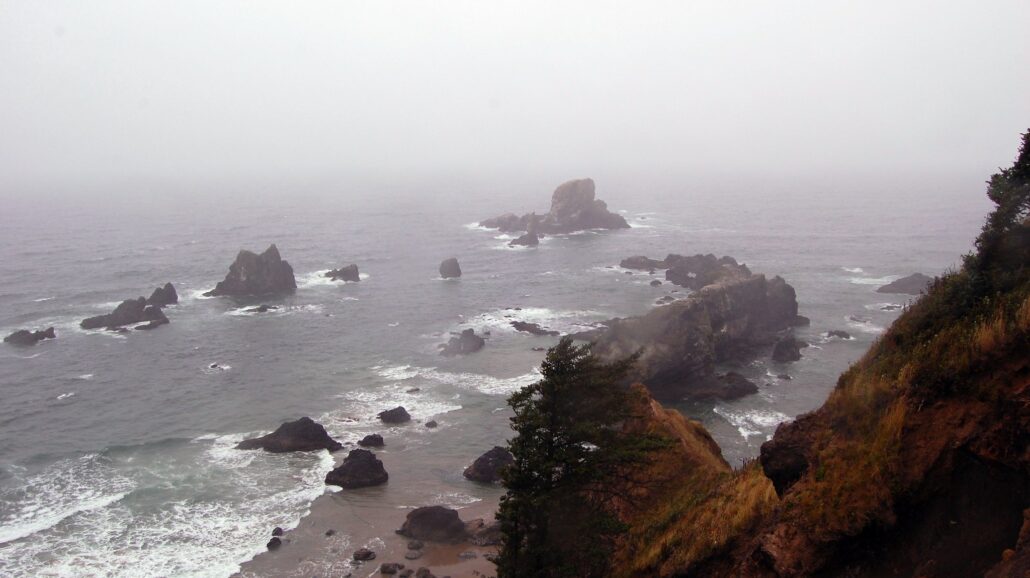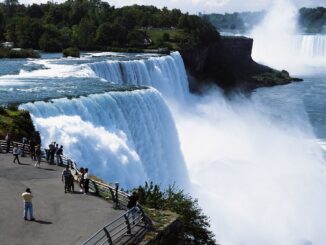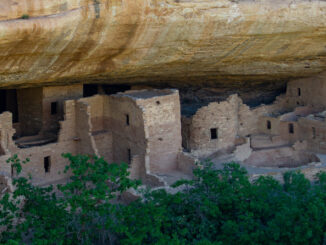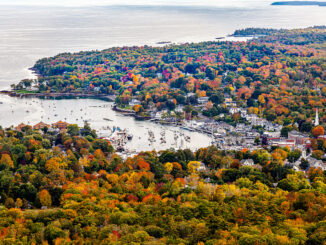
One of the nation’s most beautiful state park systems is facing strains as inflation crimps repair budgets and summer fires force closures and evacuations.
Oregon is renowned for its public lands. Though it’s home to only one national park, the Pacific Northwest state boasts hundreds of state parks. Its Pacific coast is virtually one giant public recreation area. The system draws visitors from across the state and beyond.
Despite the parks’ popularity, funding constraints, cost increases, and increasingly frequent wildfires are challenging Oregon’s state parks managers there like never before.
“Our budget is made up of a combination of our own user fees we charge and a small percentage of lottery dollars that was voted in by the people of Oregon in Measure 76, and then we get a percentage of RV registrations,” said, J.R. Collier, Deputy Director of Operations at the Oregon Recreation and Parks Department, in an interview with Public Parks.
“And it’s why we’re so sensitive to things like inflation and cost overruns.”
Inflation has eased greatly, but the cost spikes linger. Like other state park agencies (including in Maine and Michigan) OPRD had an ambitious wish list of to-do projects that included a lengthy backlog of needed maintenance. Budget crunches and sticker shock mean that only a fraction of these projects can move forward.
These struggles come despite a fresh cash infusion of $50 million granted by Oregon’s state legislature back in 2021. The money is more than welcome, Collier said, but it doesn’t go nearly as far as it used to. “It seemed like a big number at first, and within a year we were like man, we could use double that easy,” he said.
Sticker shock
Though it manages one of the most popular and scenic state park systems in the United States, Oregon Parks and Recreation does not receive tax dollars, state or federal, to fund operations.
“The state park system is not funded by taxes,” OPRD spokesperson Stefanie Knowlton confirmed for Public Parks.
“A little less than half of our budget comes from constitutionally dedicated lottery funds,” she added. “About 15% comes from our share of recreational vehicle license plate fees, and roughly 35% comes from park fees from visitors.”
OPRD says it directly manages about 250 properties and hosts 60 million visitors to Oregon’s state parks every year.
The $50 million boost to spending the state government awarded OPRD in 2021 was a one-off thing, part of a General Obligation Bond meant to pay for aging infrastructure, utility upgrades, or to build additional facilities at the most popular parks.
Oregon did receive federal ARPA funds (for the American Rescue Plan Act) as part of the federal government’s post-pandemic stimulus spending efforts. Many state park systems received a share of ARPA spending. Oregon’s did not.
They did receive the post-pandemic spike in the costs of materials and services needed for construction and maintenance work.
Collier said when OPRD went out to bid on many of the projects in its long wish list, it wasn’t uncommon for bidders to come back with offers 30% or even 50% higher than anticipated. In a few cases, the bids came in at double the initial cost estimates—a contract OPRD expected to cost about $600,000 would instead attract starting bids at $1.2 million.
Collier said he believes the higher prices are legitimate. He told Public Parks that there are no signs contractors are trying to rip the state off via unjustified price gouging.
“I’m sure it’s the litany factors that I think the contractors are dealing with, which is cost of materials, cost of all services,” he said. “You take in all those factors all at once and it drives prices up.”
He said would-be bidders have turned out to pre-bid meetings in force where they are carefully briefed on the work OPRD is seeking to get done. These briefings sometimes involve site visits where they can receive OPRD’s sense of how much any given project would likely cost. The entire process has been open, transparent, and competitive, he said. And all bidders are coming in with price quotes well above what OPRD initially expected, Collier said.
Lowered expectations
Plans have been paired down due to cost overruns. OPRD has pulled some planned projects entirely due to pricing it felt was too exorbitant.
OPRD had an original list of 11 main projects it was hoping to fund with the $50 million GO Bond from the legislature. That list was whittled down to 9 projects.
Most of the work entails upgrading or even entirely replacing underground utility lines. “They’re not pretty projects,” Collier said.
One popular spot, Beverly Beach State Park, saw a nearly complete overhaul of its underground utility network. OPRD said the equipment had become so old and obsolete that the local utility company refused to work on it. Existing infrastructure issues at Beverly Beach were worse than anticipated, and workers discovered older underground infrastructure that further complicated the work, requiring more investment to correct the problems.
The Beverly Beach State Park project alone cost $10 million mainly due to cost overruns.
The other eight projects involve work at Cape Lookout State Park, Champoeg State Heritage Area, Fort Stevens State Park, Fort Stevens State Park Guard House, Kam Wah Chung State Heritage Site, Nehalem Bay State Park, Smith Rock State Park, and Silver Falls State Park.
Aside from utility work, campgrounds were improved or added to other state parks. OPRD said it tried to spread out campground projects as evenly as possible.
Two projects have been put on hold due to cost overruns: projects at Milo McIver State Park and Portland Women’s Forum State Scenic Viewpoint.
OPRD announced in mid-August that it will soon increase park use fees and camping fees to help the agency offset increases in operating costs. More maintenance and improvement needs will arrive in the future, with or without another GO Bond.
“The sad fact is costs aren’t going to go down,” Collier said. “They rarely go backward, and so we are really trying to get in front of long-term how we manage the system because that aging infrastructure is a big one.”
OPRD says the second half of the $50 million parks improvement GO Bond was disbursed in March 2023. They have until 2026 to completely burn through this round of funding.
Here come the fires
Wildfires are further complicating Oregon parks managers’ workloads.
“2020 was the first year we had substantial damage in our system coming from wildlife,” Collier said.
He said fires are appearing in Oregon’s forests earlier than in the past. Some fires got so close to parks that staff were forced to evacuate campers in the middle of the night. Overnight visitors to Farewell Bend State Park were only given about 20 minutes’ notice to flee one approaching fire.
In addition to some damage along its beautiful Pacific coast, the unusually active fire season caused significant damage to some of Oregon’s most popular parks, including Collier Memorial State Park.
Collier at OPRD called it a “wake-up call.”
“Fires are an ever-increasing risk,” he said.
©2025 Public Parks
NOTE: This article was updated on September 13, 2024, to clarify where and why OPRD is facing cost increases.



